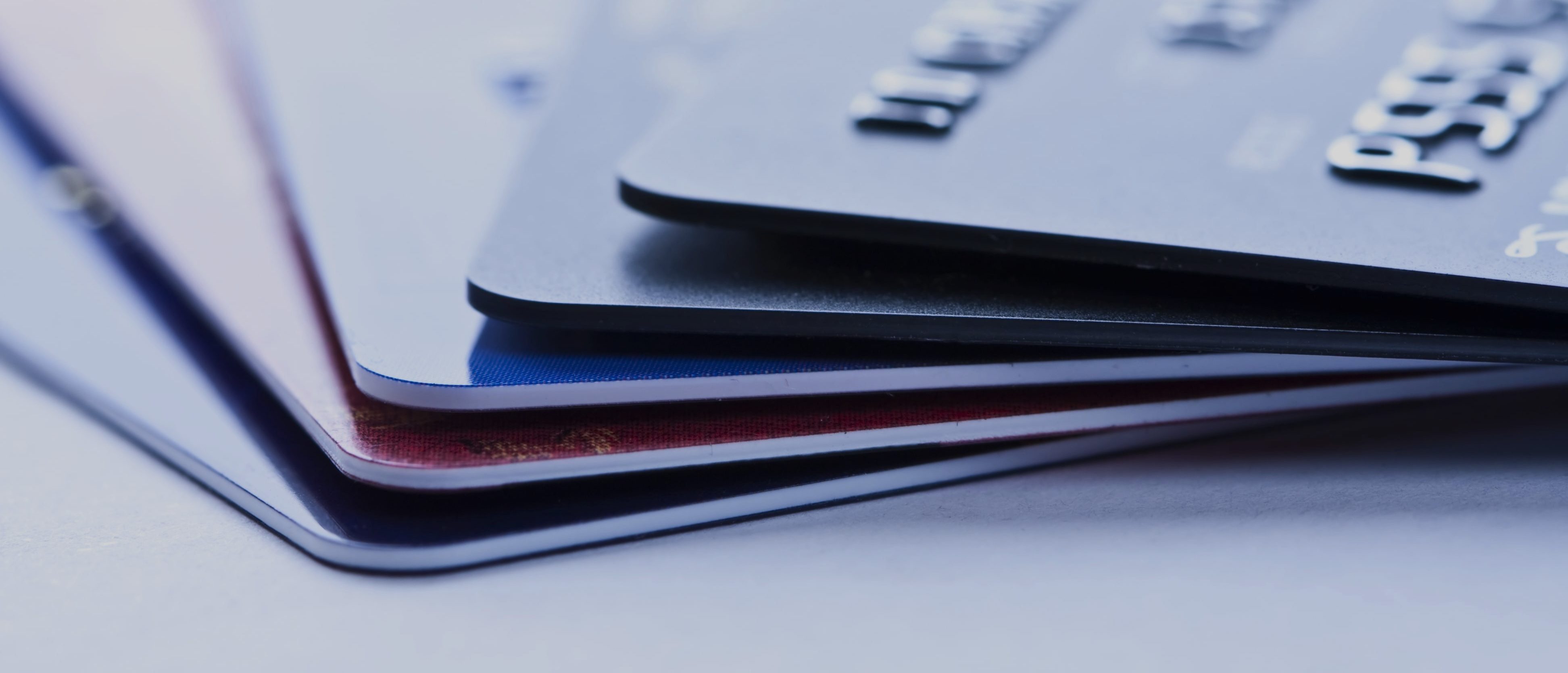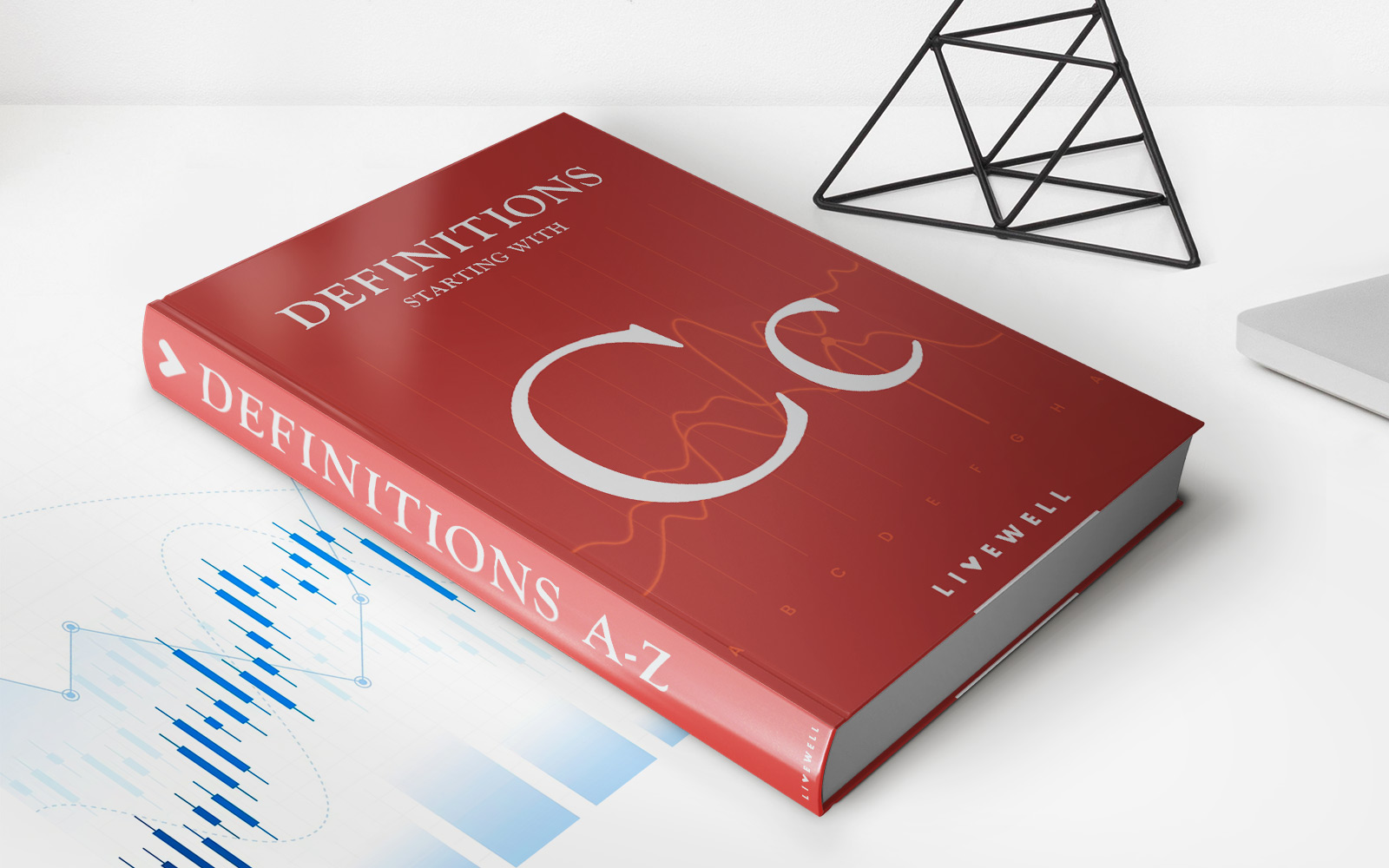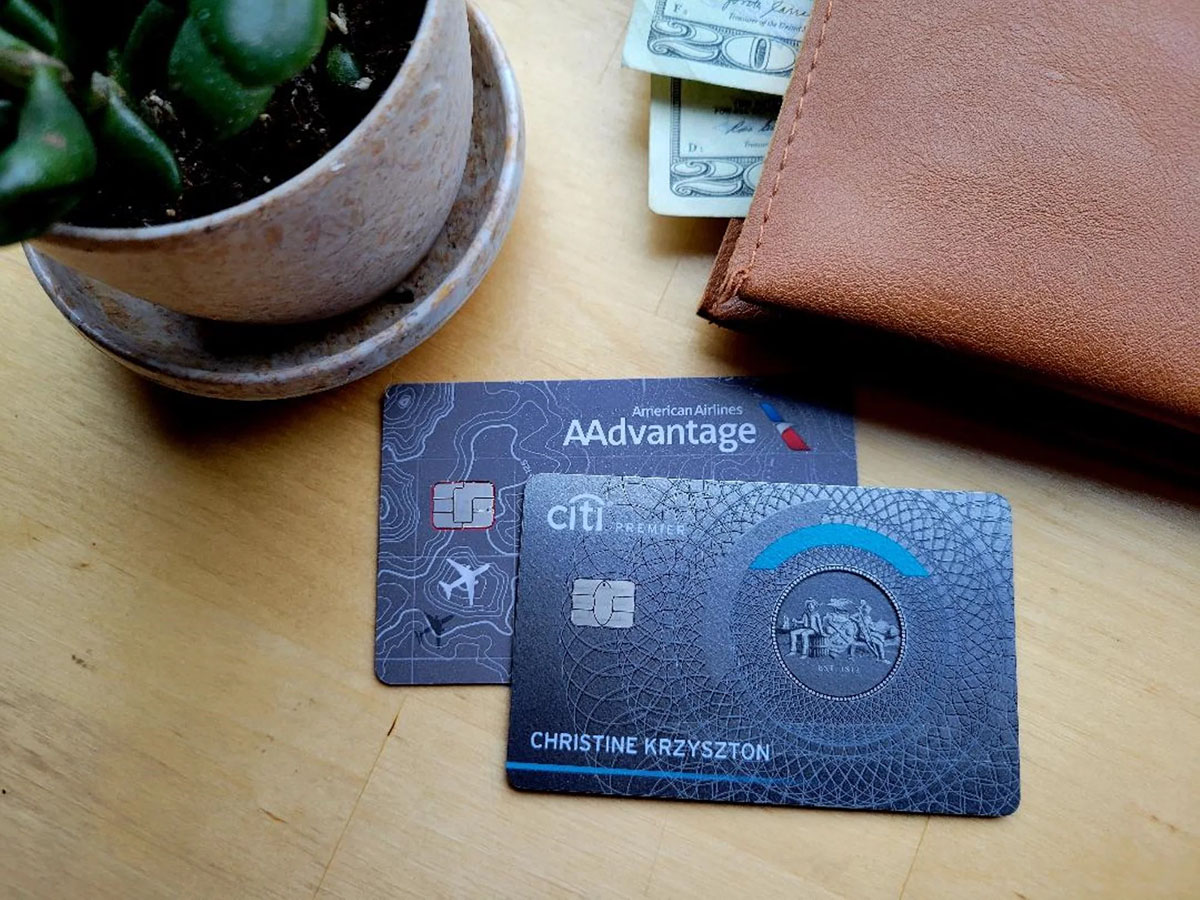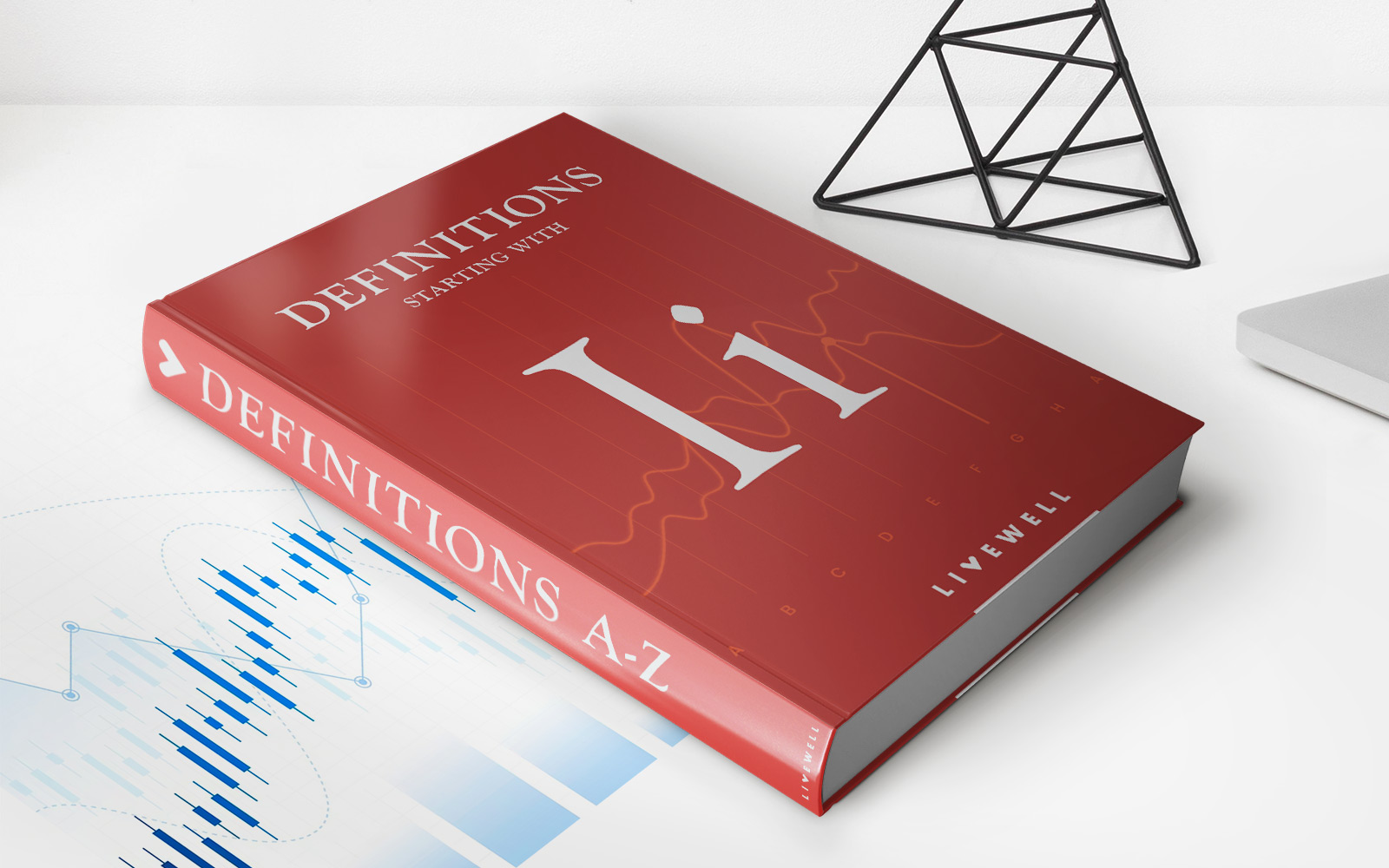

Finance
How To Increase Limit On Discover Credit Card
Modified: March 10, 2024
Learn how to increase the credit limit on your Discover credit card and improve your financial flexibility. Find out the best strategies to boost your credit line in this helpful guide.
(Many of the links in this article redirect to a specific reviewed product. Your purchase of these products through affiliate links helps to generate commission for LiveWell, at no extra cost. Learn more)
Table of Contents
- Introduction
- Understanding Your Discover Credit Card Limit
- Factors That Affect Your Credit Card Limit
- Steps to Increase Your Discover Credit Card Limit
- Option 1: Request a Credit Limit Increase Online
- Option 2: Request a Credit Limit Increase Over the Phone
- Option 3: Request a Credit Limit Increase by Mail
- Tips for a Successful Credit Limit Increase Request
- Frequently Asked Questions (FAQs)
- Conclusion
Introduction
Having a credit card can be a valuable tool for managing your finances and building your credit history. One popular credit card that many people rely on is the Discover card. However, as you start using your Discover credit card, you may find that your credit limit does not meet your spending needs. Fortunately, there are steps you can take to increase your credit card limit and enjoy greater financial flexibility.
In this article, we will explore how to increase the limit on your Discover credit card. We will discuss the factors that determine your credit card limit, as well as the different options you have for requesting a limit increase. Whether you prefer to make the request online, over the phone, or by mail, we will provide you with step-by-step instructions to help you navigate the process. Additionally, we will offer tips for a successful credit limit increase request and address some frequently asked questions to further assist you.
Increasing your credit card limit can provide several benefits. It can give you the ability to make larger purchases, take advantage of special promotions, and improve your credit utilization ratio. A higher credit limit can also increase your credit score and demonstrate to lenders that you are a responsible borrower. However, it is important to understand the factors that affect your credit limit and the consequences of a credit limit increase.
Before we delve into the specific steps and strategies for increasing your Discover credit card limit, let’s first examine how your credit limit is determined and the key factors that influence it.
Understanding Your Discover Credit Card Limit
Your credit limit is the maximum amount of money you can borrow on your credit card. Each credit card provider, including Discover, sets a credit limit based on various factors, such as your credit history, income, and payment behavior. Understanding how your Discover credit card limit is determined can help you make informed decisions about managing your credit and requesting a limit increase.
When you first apply for a Discover credit card, the credit card issuer will assess your creditworthiness and set an initial credit limit for you. This initial limit is based on the information provided in your application, including your credit score, income, and employment history. Discover also considers its own risk assessment algorithms to determine an appropriate credit limit for each applicant.
As you use your Discover credit card and establish a payment history, Discover may periodically review your account to determine if you are eligible for a credit limit increase. This review is typically done automatically and considers factors such as your payment history, credit utilization, and overall creditworthiness. Discover wants to ensure that you are managing your credit responsibly before granting a higher credit limit.
It’s important to note that your credit score plays a significant role in the determination of your credit card limit. A higher credit score demonstrates to lenders that you are a responsible borrower and may increase your chances of being approved for a higher credit limit. On the other hand, a lower credit score may result in a lower credit limit or even a rejection of your credit card application.
In addition to your credit score, Discover also takes into account your income when setting your credit limit. Your income level provides an indication of your ability to repay borrowed funds. Individuals with higher incomes may be eligible for higher credit limits, as they have a higher capacity to repay their debts.
Another factor that affects your credit limit is your payment behavior. Consistently making payments on time and in full shows responsible credit management and may increase your chances of receiving a credit limit increase in the future.
Furthermore, Discover also considers your credit utilization ratio when determining your credit limit. Your credit utilization ratio is the percentage of available credit that you are using. A lower credit utilization ratio indicates that you are not heavily relying on your credit limit and may indicate financial stability. Keeping your credit utilization ratio under 30% is generally recommended to maintain a good credit score and potentially qualify for a credit limit increase.
By understanding the factors that influence your Discover credit card limit, you can take steps to improve your creditworthiness and increase your chances of receiving a higher credit limit. In the next section, we will discuss the steps you can take to request a credit limit increase on your Discover credit card.
Factors That Affect Your Credit Card Limit
When it comes to determining your credit card limit, credit card issuers like Discover take several factors into consideration. Understanding these factors can help you better manage your credit and potentially increase your credit card limit in the future.
1. Credit Score: Your credit score is a numerical representation of your creditworthiness. It is based on your credit history, including factors such as payment history, credit utilization, length of credit history, and types of credit. Having a higher credit score can increase your chances of receiving a higher credit card limit.
2. Income: Your income level is another crucial factor that credit card issuers consider when setting your credit card limit. A higher income indicates a greater ability to repay borrowed funds and may result in a higher credit limit. However, keep in mind that you must accurately report your income on your credit card application.
3. Credit History: Your credit history reflects your past behavior as a borrower. Credit card issuers analyze factors such as late payments, bankruptcy, and delinquencies when determining your creditworthiness. A positive credit history with responsible credit management can increase your chances of receiving a higher credit card limit.
4. Payment Behavior: Making your credit card payments on time and in full is essential for building a positive payment history. Consistently meeting your financial obligations shows credit card issuers that you are a responsible borrower, which can work in your favor when requesting a credit limit increase.
5. Credit Utilization: Credit utilization refers to the percentage of your available credit that you are currently using. Keeping your credit utilization ratio low, ideally below 30%, demonstrates responsible credit management and can positively impact your creditworthiness. A lower credit utilization ratio may result in a higher credit card limit.
6. Relationship with the Issuer: If you have been a long-standing customer of Discover and have a positive relationship with the issuer, it may increase your chances of receiving a higher credit limit. Demonstrating loyalty and responsible credit card usage can make you a more attractive candidate for a credit limit increase.
7. Economic Factors: Economic factors, such as the state of the economy and prevailing interest rates, can also influence credit card limits. During times of economic downturn, credit card issuers may be more cautious in granting higher credit limits to mitigate potential risks.
Remember, each credit card issuer has its own criteria and algorithms for determining credit card limits. While these factors provide a general overview, it is essential to review the specific guidelines and policies set by your credit card provider, such as Discover, to fully understand the factors that affect your credit card limit.
Now that you have a better understanding of the factors that influence your credit card limit, let’s explore the steps you can take to request a credit limit increase on your Discover credit card.
Steps to Increase Your Discover Credit Card Limit
If you find that your current credit card limit on your Discover card is not meeting your financial needs, you may want to consider requesting a credit limit increase. Follow these steps to increase your Discover credit card limit:
1. Review Your Current Financial Situation: Before requesting a credit limit increase, assess your current financial situation. Review your income, expenses, and credit history to determine if you are in a good position to request a higher credit limit.
2. Log in to Your Discover Online Account: Access your Discover online account through the Discover website or mobile app. If you don’t have an online account, you will need to create one before proceeding.
3. Check for Pre-approved Offers: Once you are logged in, you may see pre-approved credit limit increase offers on your account dashboard. These offers provide an easy way to increase your credit card limit without a formal request. If you have a pre-approved offer, carefully review the terms and conditions and follow the instructions to accept the increase.
4. Navigate to the Credit Limit Increase Page: If you don’t have a pre-approved offer or if you want to explore other options, navigate to the Credit Limit Increase page on your Discover online account. Look for a link or tab labeled “Credit Limit Increase” or “Request a Credit Limit Increase.”
5. Provide Necessary Information: On the credit limit increase page, you will need to provide some additional information. This may include details about your income, employment, and any changes in your financial circumstances since you received your credit card. Ensure that you accurately complete all the required fields.
6. Submit Your Request: Once you have provided all the necessary information, review your request carefully for accuracy. Click the “Submit” button or similar option to submit your credit limit increase request to Discover. Be patient as the request is processed, as it may take some time for Discover to review and evaluate your request.
7. Await a Response from Discover: After submitting your credit limit increase request, Discover will review your information and make a decision regarding your request. Keep in mind that approval is not guaranteed, and Discover may require additional documentation or information to further evaluate your request.
8. Monitor Your Account and Notifications: While waiting for a response from Discover, continue to monitor your credit card account and any notifications you receive. Discover may provide updates or request additional information through your online account or by email or mail.
9. Consider Other Options: If your initial request for a credit limit increase is not approved, don’t get discouraged. You can explore other options such as reapplying after some time has passed, demonstrating responsible credit card usage, or improving your credit score to increase your chances of success in the future.
Remember, each credit card issuer, including Discover, has its own specific process for credit limit increase requests. By following these steps and providing accurate and detailed information, you increase your chances of successfully increasing your Discover credit card limit.
Option 1: Request a Credit Limit Increase Online
Requesting a credit limit increase online is a convenient and straightforward option provided by Discover. Follow these steps to request a credit limit increase through your Discover online account:
1. Log in to Your Discover Account: Access your Discover online account by visiting the Discover website or using the mobile app. Enter your username and password to log in.
2. Navigate to the Credit Limit Increase Page: Once you are logged in, locate the “Credit Limit Increase” or “Request a Credit Limit Increase” link or tab. This will usually be displayed on your account dashboard or in the account settings menu.
3. Review the Eligibility Criteria: Before proceeding with your request, carefully review the eligibility criteria set by Discover. This may include factors such as time since your last credit limit increase, payment history, and account standing.
4. Submit Your Request: Follow the prompts on the credit limit increase page to provide the necessary information. This may include details about your income, employment, and any changes in your financial circumstances. Ensure that you accurately provide all the required information.
5. Review and Confirm: After submitting your request, review the information you provided for accuracy. Confirm that all the details are correct and reflect your current financial situation. Any incorrect or incomplete information may delay or lead to denial of your credit limit increase request.
6. Wait for a Response: Once your credit limit increase request is submitted, you will need to wait for Discover to review and evaluate your request. The processing time may vary, but you can typically expect a response within a few business days.
7. Check Online Account and Notifications: While waiting for a response, regularly check your Discover online account for any updates or messages regarding your credit limit increase request. Keep an eye on your email or mail as well, as Discover may request additional documentation or information to further evaluate your request.
8. Receive Approval or Denial: Once Discover has reviewed your credit limit increase request, you will receive a notification regarding the status of your request. If approved, you will be informed of your new credit limit. If denied, the notification may provide reasons or suggestions for improving your chances of success in the future.
9. Accept the Increase: If your credit limit increase request is approved, carefully review the terms and conditions of the increase. You may need to accept the new credit limit offer through your online account or by following the instructions provided in the approval notification.
Requesting a credit limit increase online with Discover is a convenient and efficient method to increase your credit card limit. By following these steps and providing accurate information, you enhance your chances of success. However, keep in mind that approval is not guaranteed, and it may be necessary to explore alternative options or improve your creditworthiness if your initial request is denied.
Option 2: Request a Credit Limit Increase Over the Phone
If you prefer a more personal touch or have specific questions, you can request a credit limit increase on your Discover credit card over the phone. Follow these steps to make your request:
1. Gather Your Account Information: Before placing the call, make sure to have your Discover credit card and account information readily available. This includes your card number, social security number, and any other details that may be necessary to verify your identity.
2. Call Discover Customer Service: Dial the customer service phone number listed on the back of your Discover credit card or visit the Discover website to find the appropriate contact number. Wait for a representative to assist you.
3. Request a Credit Limit Increase: Once connected to a customer service representative, let them know that you would like to request a credit limit increase. Be prepared to answer any questions they may ask to verify your identity and account information.
4. Provide Necessary Information: The customer service representative will guide you through the process and may ask for details about your income, employment, and other financial information. Ensure that you provide accurate and complete information to increase your chances of a successful credit limit increase request.
5. Answer Additional Questions: The representative may ask additional questions to better understand your financial situation and creditworthiness. Answer honestly and provide any supporting documentation or information they may require.
6. Confirm and Wait for a Response: Before ending the call, confirm that your credit limit increase request has been successfully submitted. The representative should provide you with an estimated timeline for receiving a response. Remember to ask for a reference number or any other documentation related to your request.
7. Monitor Your Account and Notifications: While waiting for a response from Discover, keep a close eye on your credit card account and any notifications you receive. Discover may request further information or documentation to support your credit limit increase request.
8. Receive Approval or Denial: Once Discover has reviewed your credit limit increase request, they will contact you with a response. If your request is approved, they will inform you of your new credit limit. If it is denied, the notification may provide reasons for the denial and suggestions for improving your creditworthiness.
9. Follow Any Additional Instructions: Depending on the outcome of your credit limit increase request, you may need to follow additional instructions provided by Discover. This could include accepting the new credit limit offer through your online account or taking further steps to improve your creditworthiness for future requests.
Requesting a credit limit increase over the phone allows for a more personalized experience and the opportunity to get immediate answers to any questions or concerns you may have. By following these steps and providing accurate information, you increase your chances of successfully increasing your Discover credit card limit.
Option 3: Request a Credit Limit Increase by Mail
If you prefer a traditional approach or are unable to use the online or phone methods, you can request a credit limit increase on your Discover credit card by mail. Here are the steps to follow:
1. Write a Letter: Start by writing a formal letter to request a credit limit increase. Begin with a polite and professional salutation, such as “Dear Discover Card Customer Service.”
2. Include Your Account Details: In the body of the letter, provide your full name, account number, and any other relevant account details to ensure that Discover can accurately identify your account.
3. State Your Request: Clearly state that you are requesting a credit limit increase. Briefly explain the reasons for your request, such as increased income, improved credit score, or a desire for greater purchasing power.
4. Provide Supporting Information: Include any supporting documentation that may strengthen your case for a credit limit increase. This can include recent pay stubs, tax returns, or evidence of positive financial changes.
5. Sign and Date the Letter: Sign the letter with your full name and include the date to indicate when the letter was written.
6. Mail the Letter: Place the letter in an envelope and address it to the Discover Card customer service department. Find the correct mailing address by visiting the Discover website or contacting customer service.
7. Track the Mail: Consider using a certified mail service or obtaining proof of mailing to track the delivery of your letter. This will ensure that it reaches Discover and can be verified if necessary.
8. Await a Response: Once Discover receives your letter, they will review your request and respond to you by mail or email. The response time may vary, so be patient and continue to monitor your account for any updates.
9. Accept or Follow Up: If your request is approved, carefully review the terms of the credit limit increase offer provided in Discover’s response. If it aligns with your expectations, follow any instructions provided to accept the new credit limit. If your request is denied or you receive a counteroffer, consider following up with Discover to discuss further options or clarify any concerns.
Requesting a credit limit increase by mail allows you to provide a detailed written request and include supporting documentation. While it may take longer than other methods, it can be an effective option if you prefer written communication or have specific circumstances that require additional explanation.
Tips for a Successful Credit Limit Increase Request
When it comes to requesting a credit limit increase on your Discover credit card, there are several tips to keep in mind to increase your chances of a successful outcome:
1. Maintain a Good Payment History: Make sure to consistently make your credit card payments on time and in full. A track record of responsible payment behavior demonstrates your creditworthiness and shows that you can handle a higher credit limit.
2. Use the Card Regularly: Actively using your Discover credit card and keeping your account in good standing can show that you are a reliable borrower. Regular usage coupled with prompt payments can help build a positive relationship with Discover and increase your chances of a credit limit increase.
3. Keep Your Credit Utilization Ratio Low: Aim to keep your credit utilization ratio, which is the amount of credit you use compared to your total available credit, below 30%. This demonstrates responsible credit management and can positively impact your creditworthiness.
4. Improve Your Credit Score: Work on improving your credit score by paying down debt, resolving any negative marks on your credit report, and managing your credit responsibly. A higher credit score can strengthen your case for a credit limit increase.
5. Increase Your Income: If possible, increase your income through a higher-paying job, additional sources of income, or taking on freelance work. A higher income indicates a greater ability to manage credit and may enhance your chances of securing a higher credit card limit.
6. Provide Accurate and Complete Information: Whether requesting a credit limit increase online, over the phone, or by mail, ensure that you provide accurate and complete information. Double-check all details, including income, employment, and financial information, to avoid any delays or complications in the evaluation process.
7. Be Polite and Professional: When interacting with Discover customer service representatives or writing a request letter, maintain a professional and polite tone. This can leave a positive impression and may influence the outcome of your credit limit increase request.
8. Be Prepared for a Counteroffer: In some cases, Discover may provide a counteroffer instead of approving your initial requested credit limit increase. Be open to considering the counteroffer and evaluate whether it aligns with your needs and financial situation.
9. Follow Up if Necessary: If your initial credit limit increase request is denied, consider following up with Discover to discuss the reasons for the denial and explore potential alternatives or actions you can take to increase your chances of success in the future.
Remember, each credit card issuer has its own policies and criteria for granting credit limit increases. These tips can serve as general guidelines, but it’s essential to review Discover’s specific guidelines and requirements to ensure you have the best chance of a successful credit limit increase request.
Frequently Asked Questions (FAQs)
Here are some common questions and answers regarding credit limit increases on your Discover credit card:
Q1: How often can I request a credit limit increase on my Discover card?
A1: There is no set time limit for requesting a credit limit increase on your Discover card. However, it is generally advisable to wait at least six months between requests to allow for sufficient time to build a positive credit history.
Q2: Will requesting a credit limit increase on my Discover card affect my credit score?
A2: Requesting a credit limit increase may result in a hard inquiry on your credit report, which can temporarily impact your credit score. However, if approved, a higher credit limit can lower your credit utilization ratio and potentially improve your credit score in the long run.
Q3: How much of a credit limit increase can I request on my Discover card?
A3: The specific amount you can request for a credit limit increase will depend on your individual circumstances and Discover’s evaluation process. Some cardholders have reported receiving small incremental increases, while others have seen larger jumps in their credit limits.
Q4: Will Discover automatically raise my credit limit over time?
A4: Discover may periodically review your account and automatically increase your credit limit based on your payment history, creditworthiness, and usage patterns. However, it is not guaranteed, and you may still need to request a credit limit increase if you desire a higher limit.
Q5: What factors can lead to a denial of a credit limit increase request?
A5: Several factors can contribute to a denial of a credit limit increase request, such as a low credit score, inconsistent payment history, high credit utilization, recent delinquencies, or financial instability. Review your credit report and address these issues before making a request.
Q6: Can I request a credit limit increase on my Discover card before activating it?
A6: It is generally recommended to activate your Discover card before requesting a credit limit increase. Build a positive payment history and usage pattern with the card first, as this can strengthen your case for a higher credit limit.
Q7: What should I do if my credit limit increase request is denied?
A7: If your request is denied, don’t get discouraged. Review the reasons provided for the denial and consider taking steps to improve your creditworthiness, such as paying down debt, improving your credit score, or demonstrating responsible credit usage. You can also reach out to Discover for further clarification or guidance.
Q8: Will a credit limit increase on my Discover card affect my ability to be approved for other credit cards or loans?
A8: A credit limit increase on your Discover card can potentially improve your credit utilization ratio and overall creditworthiness. However, each credit card issuer and lender evaluates credit applications independently, considering various factors. While a credit limit increase can have a positive impact, it is not a guarantee of approval for other credit cards or loans.
These FAQs address some common concerns regarding credit limit increases on your Discover credit card. If you have further questions or require more specific information, it’s always best to reach out to Discover directly for personalized assistance.
Conclusion
Increasing the credit limit on your Discover credit card can provide you with greater financial flexibility and purchasing power. By understanding the factors that affect your credit limit and following the appropriate steps, you can increase your chances of a successful credit limit increase request.
Take the time to assess your financial situation, review your credit history and payment behavior, and determine if you meet the eligibility criteria set by Discover. Consider the options available to you, whether it’s requesting a credit limit increase online, over the phone, or by mail.
Remember, maintaining a good payment history, using your card responsibly, and keeping your credit utilization ratio low can strengthen your case for a credit limit increase. By providing accurate information and following up if necessary, you can enhance your chances of success.
Whether your request is approved or denied, use the experience as an opportunity to evaluate your financial habits and make any necessary adjustments. Continue to monitor your credit card account, credit score, and overall financial health for continued growth and improvement.
Before making a credit limit increase request, also consider the potential impact on your credit score and financial situation. Only request a credit limit increase if it aligns with your financial goals and can be managed responsibly.
In conclusion, increasing the limit on your Discover credit card requires careful consideration, understanding of the process, and adherence to the guidelines set by Discover. By following the tips and suggestions provided in this article, you can navigate the request process and potentially secure a higher credit limit, giving you more financial freedom and control.














